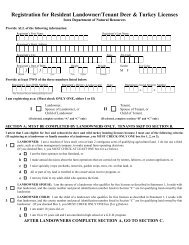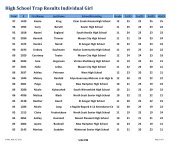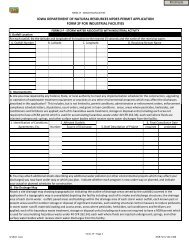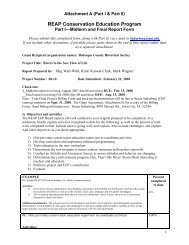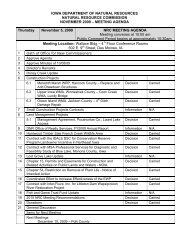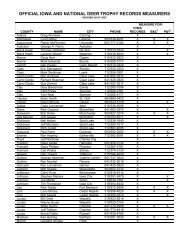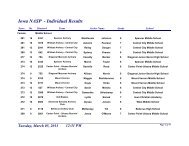Iowa Fishing Regulations - Iowa Department of Natural Resources
Iowa Fishing Regulations - Iowa Department of Natural Resources
Iowa Fishing Regulations - Iowa Department of Natural Resources
Create successful ePaper yourself
Turn your PDF publications into a flip-book with our unique Google optimized e-Paper software.
Length Limits - Not Only a Good Idea - But the Law<br />
Length limits are an important tool in fish management. Length<br />
limits are used in <strong>Iowa</strong> to protect important predator species such as<br />
bass, walleye, muskie and trout from overharvest.<br />
Length limits are also used to provide larger quality size fish to<br />
catch. Length limits are not the cure-all to better fishing in all cases.<br />
Improved fishing opportunities do exist where anglers comply with<br />
the law and return fish outside the length limit unharmed to grow and<br />
be caught again.<br />
Total length is measured<br />
from the tip <strong>of</strong> the snout to<br />
the end <strong>of</strong> the tail with the<br />
fish laid flat, mouth closed<br />
and tail lobes pressed<br />
together. See p. 13 for<br />
paddlefish and shovelnose<br />
sturgeon measurement.<br />
How Big Was That Fish?<br />
How To Measure Fish Length<br />
Estimate the weight <strong>of</strong> a released fish using the following formula:<br />
Sunfish, walleye, northern, muskie and largemouth and smallmouth<br />
bass, take the length in inches and multiply it by itself 3 times.<br />
Divide that total by the following number for each species: sunfish,<br />
divide by 1,200; walleye, divide by 2,700; northern and muskie<br />
divide by 3,500; largemouth and smallmouth bass, divide by 1,600;<br />
Catfish, divide by 3,300.<br />
For example, a 20-inch largemouth bass. First multiply 20 x 20 x<br />
20 (20 x 20 = 400, 20 x 400 =8,000) then divide 8,000 by 1,600 = 5<br />
You have just released a 5-pound largemouth bass!<br />
For Trout, multiply the girth (distance around the body) by itself<br />
and then multiply that value by the fish’s length and divide by 800.<br />
33



